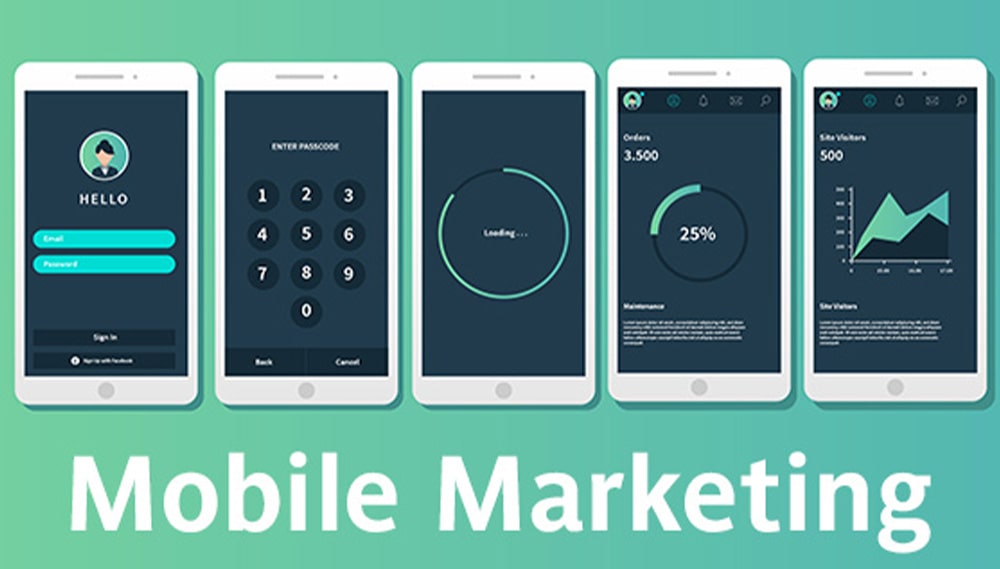Why Is Mobile Marketing so Important?
It’s clear that more people than ever spend their free time online, and mobile phones have become the number one means of communication due to the convenience and utility they offer.
Consider this: according Pew Research, 81% of Americans use smartphones, and an average of 34 hours are spent every month on mobile apps.
No to mention almost 40% of all eCommerce purchases during the 2018 holiday season were made on a smartphone.
Similarly, GSMA intelligence identified that 5.1 billion people in the world are subscribed to mobile services, which accounts for 67% of the world’s total population.
Google continually rolls out new updates for their marketing platform check out a few of these (secret google updates). More recently however Google rolled out an update in which Google now indexes (adds your site to google) mobile webpages first. That’s HUGE!
This is why mobile marketing is an important way to reach your target audience, boost sales, and increase ROI.
What Is Mobile Marketing?
Put simply, mobile marketing involves targeted marketing content for smartphone users. It involves a strategy that aims to reach smartphones users through specially curated content on websites, email, SMS, social media, and mobile apps.
The demand for mobile marketing is such that advertisers and business campaigns have increased their mobile spending from 20% to 75% in 2018 alone.
With 57% of all traffic coming from smartphones and tablets, it is more important than ever to understand the benefits of mobile marketing, and how to design successful strategies.
How Mobile Marketing Will Benefit You
With the Pew Research Centre reporting that 96% of Americans own a mobile phone of some kind, mobile marketing has enormous potential.
However, this takes consistent time and effort; in order to be effective, it requires marketers to understand their mobile audience, and design original content and SMS/app campaigns accordingly.
Due to the widespread adoption of smartphone devices, mobile marketing also has the following benefits:
· Helps create brand value
· Ensures personalization
· Increases social media sales
· Increases marketing ROI
How To Succeed With Mobile Marketing
Mobile marketing provides the opportunity to leverage an effective and focused communication medium – to utilize it properly, businesses need to adopt the strategies and tactics outlined below:
Mobile Friendly Site
Creating a mobile friendly experience is the first and most crucial step for streamlining customer experience.
Mobile users are more demanding and less tolerant then desktop users; they expect easy accessibility and a high quality visual experience.
Additionally, with changes in SEO, mobile friendly sites have become a major indicator for ranking. This means that if sites are not mobile friendly, they are pushed too the bottom of the search engine ranking pages (SERPs). Improving your mobile friendliness doesn’t just improve your SEO & SERP rankings, it also has direct correlation to improving CTR (click-through-rate) learn more about improving your CTR 4 ways to increase your click through rate article.
Creating a responsive web design, using social media logins, and mobile friendly content are just some of the easiest and quickest ways to create a mobile optimized site.
Social Media Logins
Using social media logins is helpful because it discourages consumers from re-thinking their decision. They are more likely to ‘reshelf’ the product if they have to go through the hassle of creating a new account on site.
The main goal of a mobile friendly website should be to get consumers on board with the company’s product or service as quickly as possible.
Utilising social media logins for platform access mean the barriers to entry for a consumer are low, and inherently the number of users that then go onto interact with the site are higher.
Responsive Web Design
Similarly, a responsive web design indicated by a mix of flexible grid, layouts, and images helps the user switch from their desktop to mobile phone rather seamlessly.
A responsive web design accounts for the required shift in resolution, image size, and scripting abilities.
In short, the website should quickly accommodate and adjust to the user’s preference. At the same time, companies don’t have to spend time and resources designing web content for different kinds of devices.
Mobile Friendly Content
Finally, creating mobile friendly content can help pique the user’s interest; consumers reading content, researching, or just scrolling through your site for products and services don’t have the time to skim through blocks of text. Of Course influencer content can inherently be a great marketing channel to pursue – read out Basic guide to influencer marketing article.
This is why the most effective mobile friendly content is short, and to the point, with a strong call to action.
In the same vein, navigational issues, such as buttons and links that provide clear instructions can help mobile users quickly grasp information. It is important to ensure that all your content – including images – scales and displays properly on all devices.
Google’s mobile friendly algorithm specifically states that the content on your mobile phones should fit horizontally in the viewport.
Make Mobile Payments Available
Consumers specifically look for a way to make convenient and quick transactions. Big brands have already jumped on board to enrich the user’s shopping experience by including mobile payments.
It is important to set up company’s services so that they accept all kinds of smart devices – including smart watches.
Yet not all customers trust mobile purchases so a proactive way of making sure the consumer makes the purchase, is by signing them up with a secure payment processor.
Secure payment processors allow businesses to include mobile payments, while ensuring that consumer information remains confidential.
Provide Personalized Content
A good way to increase the impact of mobile marketing, is to focus on personalized content.
While many businesses understand the importance of personalized marketing efforts, very few have actual strategies in place for this.
Research by Econsultancy has shown that while 43% of businesses do offer a personalized experience on their website, only 13% of this experience is offered on mobile devices. This is unfortunate, since 80% of consumers are more likely to make a purchase when brands offer a personalized experience – across all devices.
This is why to attract consumers, mobile content should be tailored according to the user’s exact location – and include information that specifically applies to that area.
With modern marketing automation platform we also have the ability to develop dynamic web pages. Whereby if a user re-visits a webpage we can show them content that’s personalised to them. For example we can have their name show up in a heading/paragraph on a website, this of course is an extremely personalised and powerful marketing strategy.
In a Nutshell
Mobile marketing helps organizations reach their desired target audience quickly and efficiently. With the global population spending most of their time online on smartphones, its importance should not be underestimated.
However, succeeding at mobile marketing is no easy feat; effective mobile marketing requires careful planning and foresight.
Curating a mobile friendly site, providing personalized content and secure mobile payments are just some ways businesses can create a successful marketing strategy. Once implemented successfully, it can result in the form of increased consumer demand, a boost in sales and consumer loyalty.
Have further questions? Reach out to the Team @ Insil or visit our website




